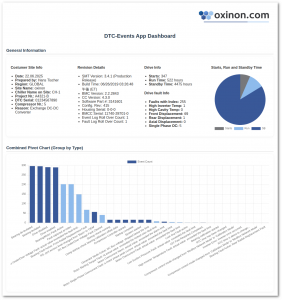As a reference project, I developed a web application for the automated processing of log and CSV files. The goal was to evaluate the complex data from Danfoss Turbocor compressors efficiently, present it in a clear and structured way, and make it available for further analysis.

The solution enables automatic log data analysis, fault detection, and real-time reporting.
This makes complex system data immediately usable – supporting efficiency improvements, early fault detection, and data-driven decision-making.
Highlights
- Automated data analysis & reporting (CSV, PDF, dashboard)
- Integration with Microsoft SharePoint for Excel & Power BI
- Predictive maintenance through trend and fault detection
- Secure data processing with automated background tasks

My Responsibilities
- Design & development of a secure, web-based platform using Flask (Python)
- Implementation of data validation to ensure consistent metadata
- Automated extraction and analysis of key operating information (starts, runtimes, fault indices, fault statistics)
- Data preparation and visualization in interactive dashboards and CSV files
- PDF report generation for documentation and service purposes
- Integration with Microsoft SharePoint via the Microsoft Graph API for direct use in Excel and Power BI
- Process automation, such as scheduled metadata merging, regular uploads, and daily cleanups
- Strong focus on security through access restrictions, session directories, and permission management
Technologies & Expertise
- Python / Flask for web development
- Pandas for data analysis and CSV processing
- APScheduler for background scheduling
- Microsoft Graph API for SharePoint integration
- PDFKit for automated report generation
- Regex & data cleaning for event and fault analysis
- Security concepts (umask, session isolation, permissions, cleanup jobs)
Added Value of the Application
The app transforms unstructured CSV log files into a clear, analyzable data foundation:
- Rapid detection of trends and faults
- Support for predictive maintenance
- Optimization of energy efficiency through comparison of operating parameters
- Centralized data usage in IoT and edge computing environments


